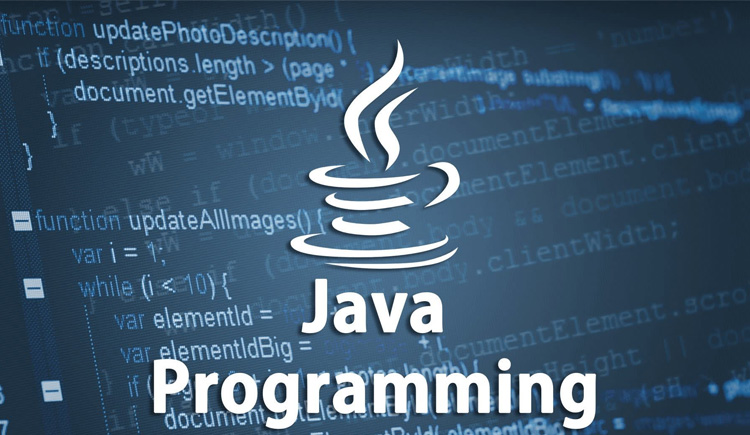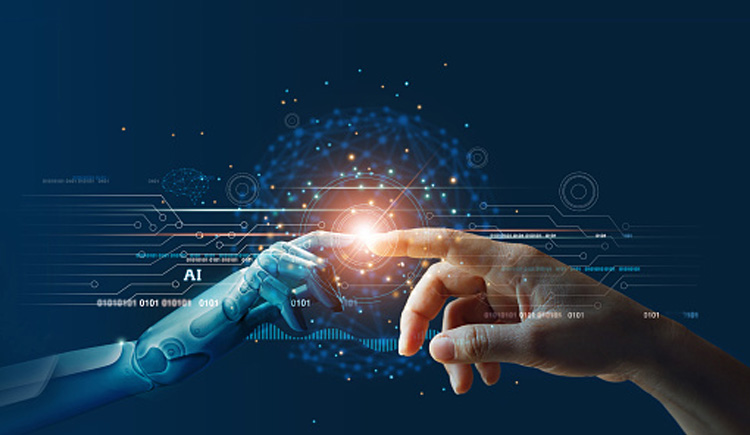
Internet of Things
The Internet of Things is the general concept of network devices to capture and collect data from the environment and then share that data over the internet where it can be processed and used for various interesting purposes. IoT-based systems connect the Internet to the physical world with the help of ubiquitous sensors. Availability of low-cost sensors and long-range wireless technologies The connectivity gap has been closed.
The subject conveys basic concepts of the IOT through real-time applications and working on various microcontroller boards and hardware interfaces in order to understand practical aspects of the topic. Topics covered include concepts of embedded, networking, sensing, communication protocols, and cloud services such as Node-Red that are intended to be connected to IOT devices. Even advanced concepts of the IOT are covered by real-time applications and case studies. Students are encouraged to work on real-time projects in order to better understand the implementation of ideas from a hardware and software perspective. Topics covered include concepts of security concerns in IOT systems, the role of the IOT in different domains with all possible paths, communication protocols, how AI and IOT work together, and case studies.
Course Details
The purpose of this course is to provide students with a solid foundation in the fundamental concepts of the Internet of Things. The main objective of the course is to get the students to learn and implement real-time IOT applications. The course covers understanding how basic embedded devices and microcontroller and microprocessor chips work.
Discussions about the functionality of various environmental sensors and their interfaces to microcontroller chips are covered. Basic understanding of various communication protocols and communication technologies for implementing IOT applications as well as the general concept of cloud computing and working with the IBM Cloud for device communication with the cloud are included.
Course Information
MODULE – I
Introduction to IOT and Sensing: Definition of the Internet of Things, history of the IOT, definition of IOT from various resources, basic components, applications and advantages of IOT systems, problems and challenges faced by current IOT systems. Introduction to microcontrollers and microprocessors, comparison between microcontrollers and processors, characteristics of different microcontroller boards like AT89C51, PIC16F877A, ATMEGA8 and development boards like Arduino uno, Arduino nano, Arduino Lily, Mega etc. Description of the microprocessor development board Raspberry Pi and its different models.
Sensor technology: Define the sensor technology, description of the converter, converter compared to sensors, properties of an ideal sensor, sensor resolution, sensor class and sensor types according to data type and output type, sensory deviations and errors. Networking: Basic concept of networking, classification of different communication network technologies based on their range estimates, different network topologies with their advantages and disadvantages.
MODULE – II
Accessing GPIO and interfacing led’s, segment and lcd with Arduino: Access to GPIO, working with digital I / O, LED interfaces and programming, creating delay functions, generating different patterns on LED. Introduction to 7-segment display, connection of 7-segment display with Arduino, programming of 7-segment display, 0-9 counters, programming of multiplexed 7-segments, 00-99 counters. Introduction to buttons and buzzer and how they work, connection of button and buzzer with Arduino, program for controlling LEDs with the button and for controlling the buzzer via the button. Introduction to the LCD and its pinout, hardware connections from LCD to Arduino, LCD programming to display text on the LCD, LCD program to display moving messages, display the counter on the LCD.
MODULE – III
Motors, Relay, Keypad and Bluetooth interfacing with Arduino: Introduction to DC gear motor, role of motor driver IC L293D, hardware connections of DC gear motor with Arduino and program to control its rotation, introduction to servo motor and its principle of operation, hardware connection and angle control of servo. Introduction to relay and its role in embedded systems. Relay interface with Arduino and program for controlling devices with relays. Introduction to the HC-05 bluetooth module, hardware connections of the bluetooth module with Arduino, program to control a guided mobile device with the bluetooth module. Introduction to the keyboard and its internal architecture, hardware connections of the keyboard module with Arduino, program to display the values entered via the keyboard on the LCD.
MODULE – IV
Introduction to Sensors and Interfacing various sensors with Arduino: Introduction to Sensors and their features, Classification of sensors and sensor resolution. Introduction to IR and its working, Hardware connections of IR Module with Arduino,Program to make an obstacle detection system using IR sensor. Introduction to Ultrasonic and DHT and their working, Hardware connections Ultrasonic and DHT with Arduino. Program to make an obstacle distance measurement system using Ultrasonic sensor, Program to make temperature and humidity meter using DHT11.
MODULE – V
Introduction to IBM Cloud and Concepts of Node-red Application Framework: What is IBM Cloud, IBM Cloud: Choice of runtimes, IBM Cloud: Services, IBM Cloud: Regions and locations, Introduction to IBM Watson AI services, Watson Visual Recognition, Watson Assistant
Watson Language Translator, Watson Natural Language Understanding, Watson Speech to text, Watson Text to speech, Watson Tone Analyzer. Introduction to flow-based programming , Flow-based programming characteristics , Node-RED overview , Node-RED flow editor
How Node-RED helps in IoT applications, Import a Prebuilt Flow from GitHub, Create a new Node-RED Flow -Analyze and Chart Data.
Integrate Watson services with Node-red application.
Future Opportunity
IoT developers create the applications that devices will work with. They use standard APIs and programming languages such as Java and C ++ in their daily work, so good programming skills are a must. Overall, software development roles are expected to increase 21 percent in the 10 years to 2028, which is a good prospect for IoT developers.
IoT architects offer a comprehensive perspective on company-wide strategy. IoT architects are responsible for developing strategies for which IoT platforms, sensors and actuators should be built; what interconnection technologies should be used or developed; and how best to meet potential customer needs. These roles are typically found in larger IoT development companies and revolve around long-term business planning. The jobs for IoT architects are expected to continue to grow as more devices connect to the IoT network.
IoT designer for embedded systems An IoT system designer is responsible for creating device-specific firmware using Python, C ++ and other programming languages. Designers also work closely with the hardware involved. The job market for these roles is growing steadily.
An understanding of embedded systems, computer architecture, hardware security, and software (like C and C ++) is helpful for this career path.
IoT Solutions Engineer Solutions engineers are tasked with helping customers find solutions to their business challenges. They offer solutions that leverage existing technologies like wireless networks for a specific customer who wants to provision something
IoT solution engineers need to work closely with customers to identify their needs and take a hands-on approach to determining what types of sensors, wireless technology, and other components are best for them.
IoT-specialist engineers earn high salaries, and as more companies realize the value of IoT connectivity for their customers, the demand for solution engineers is likely to increase.
Tutor Information
At Allsoft solutions, tutors have excellent skill and many years of experience in C, C++, Internet of Things, Embedded, Arduino, Raspberry Pi , IBM cloud , Thingspeak IOT platform for analytics, Node-red, Watson services and Watson Studio.
Industry Driven projects
Posture correction wearable shirt
Designed to overcome the widespread problem of poor posture and its negative effects.
This is the device we would actually use to prevent back pain and other serious posture problems. Again, this project was tested on three people and feedback was recorded on the changes in posture they observed after using this device.
To implement this system, flex sensors were used on the upper, middle, and lower backs and a gyroscope was used to sense the angle between the chair seat and the backrest.
When this shirt is worn for the first time, it records the initial values for all four cases and then compares them with these values. If the values change from the initial values, the posture is considered incorrect.
The posture is only correct if the reading stays the same and a buzzer prompts the person to correct their posture.
Detection of Guilty with physiological parameter sensing and Concealed Information Test
Designed system is used to identify guilty and innocent from the suspects.
In this project there are only two variables. GSR (galvanic skin reaction) and HR (heart rate) were monitored. A GSR module was used to analyze these parameters and a dedicated heartbeat sensor was developed.
Reading in the form of graphs was observed using software called Processing. And the final results were calculated from these readings.
The hypothesis is that a person's state of mind is related to sweating from sweat glands that are embedded in our skin. The heart rate changes both in number and in amplitude when lying down. Interrogation methods and questioning techniques also play a major role in uncovering lies.
For a practical experiment, a sham theft was carried out and a questionnaire was created that was 90% correctly identified. Only one of the subjects, who happened to be guilty, managed to abandon the test.
Prosthetic hand
A robotic hand that works like the original hand. It is a substitute for the actual hand. All parts of this hand were made in 3-D printing.
The basic components of the hand and glove are the hand itself, the servos, the Arduino, the glove, and the flex sensors. The glove is mounted with flex sensors: variable resistors that change their resistance value when bent. They are mounted on one side of a voltage divider with constant resistances on the other. The Arduino reads the change in voltage when the sensors are bent and triggers the servos to move proportionally. The servos pull strings that act as tendons, allowing the fingers to move.
Blind Stick
Developed as a guide for blind people who use ultrasonic sensors to detect obstacles within a radius of 3 m and display them with a buzzer.
GSM and GPS technology have been integrated to track the location of blind people and make it easier for blind people to send emergency messages or make phone calls via GSM.
Emergency switches are provided, one to send the current location to a specific number and one to make an emergency call.
Also in the event that the stick is misplaced, a person receives a remote control with a button that sends signals to the stick when this button is pressed and a buzzer sounds to indicate whether the stick is nearby.
Automatic plant watering system
A simple prototype that saves both water and time.
This system uses soil moisture sensors and a sensor is buried in each pot that measures the moisture content in the soil and provides information to the control unit.
The control unit with the help of servo leads the pipe to the pot with less soil moisture and only the required plant is watered without human intervention.
Intruder Detection System using Raspberry pi and PI camera
The system uses both ultrasonic and motion sensors to detect the presence of people at the installation site.
In the event of human recognition, the Raspberry Pi camera is activated and the image is recorded, which is transmitted to the person or authority concerned by post or via a pushbullet application on mobile phones.
The person can only enter if the person concerned sends a signal to the open gate, otherwise the gate remains closed.
Alcohol Detection system with automatic engine locking
A prototype aims to avoid drunkenness and driving a car through the use of an automated system.
In this system, a microcontroller from the AVR family with an alcohol sensor was connected to a GSM-GPS system
The alcohol sensor (MQ3) is used to monitor the user's breath and constantly sends signals to the microcontroller. When the alcohol sensor receives a high alcohol signal, the microcontroller sends the car's location in the form of latitude and longitude to a specific number.
The car's ignition is also turned off for safety reasons to stop the car and this prototype was made on the Maruti 800. attached








